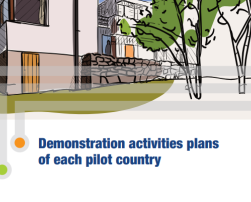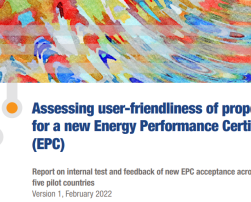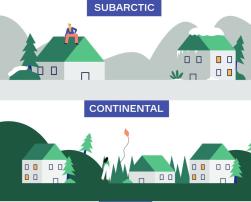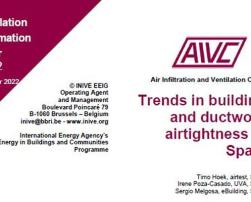
The role of circularity and low-carbon materials in building projects
Why is it important the way we build? How is the construction and building industry going to be transformed in order to met the energy transition targets? According to Iulia Potor, from Partel, by integrating Life Cycle assessment for construction projects, professionals can optimise whole life carbon, cost, and circularity of design.
Editorial team

ePANACEA Demonstration activities plans of each pilot country
This document contains a detailed description about the ePANACEA testing and demonstration activities concerning the case studies of each pilot country. It includes a description of the process and the development of the activity schedules and a detailed explanation of the milestones including descriptions of selected case studies, activity schedules, milestones and expected outcomes.
Angeliki Kaplani

ePANACEA Report on internal test and feedback of new EPC acceptance across the five pilot countries
This Horizon 2020 ePANACEA project report presents the theoretical background which prepares for the testing strategy for the acceptance workshops and provides insights on how the EPC can be improved for end-users. Methodology used to test the acceptance of proposed EPC features among ePANACEA pilot countries and the results from each workshop are presented.
Angeliki Kaplani

EPAH handbooks: a guide to address energy poverty
The “EPAH Handbooks: A Guide to Understanding and Addressing Energy Poverty” provides guidelines for policy-makers and practitioners to tackle and assess energy poverty at the local level with the aim of efficiently address the local energy transition. Each handbook offers practical information and tools.
Editorial team

Technology and innovation pathways for zero carbon building by 2030 - strategic vision from IEA Technology
The building sector is increasingly working towards the implementation of clean energy technologies and occupants´ behaviour shifts in order to reduce GHG emissions and achieve the zero-carbon building stock targets. IEA Technology gives their strategical view about it.
Editorial team

Synikia project: presentation of the project and case studies
Do you want to know more about syn.ikia project? The following leaflet clearly explains the project, such as its consortium, its mission, and its main objectives. Among those the leaflet illustrates the 4 demo cases chosen to represent different climatic zones for the study.
Editorial team

RenoBooster project is boosting the green renovation of private housing in Vienna
The H2020 RenoBooster project aims to increase the number of green renovations of private housing, thereby contributing to the decarbonisation of the city and to reaching the ambitious target to become climate neutral by 2040.
Editorial team

Smart Readiness Indicator (SRI) - Focus on lighting systems
The Smart Readiness Indicator (SRI) is a common EU scheme for rating the smart readiness of buildings. Lighting is one of the nine technical domains addressed by the SRI. Switching to more energy-efficient lighting products will save consumers an average of €30 per year and could preventing roughly 7 million tonnes of CO2 emissions in Europe per year.
Editorial team

EU Buildings Climate Tracker: A methodology for the decarbonisation indicators of buildings
The EU Buildings Climate Tracker is a benchmark and assessment tool checking on the status of the EU building stock and its progress towards climate neutrality by 2050. The paper gives more details regarding the methodology and results.
Editorial team

AIVC's Ventilation Information Paper #45.2: Trends in building and ductwork airtightness in Spain
AIVC's Ventilation Information Paper #45.2: Trends in building and ductwork airtightness in Spain summarizes current knowledge on trends in building and ductwork airtightness in Spain.
Maria Kapsalaki